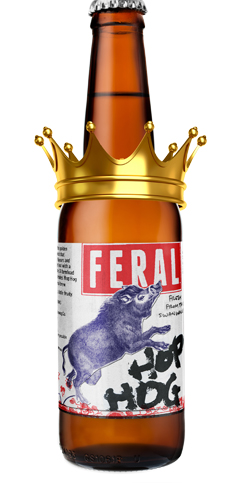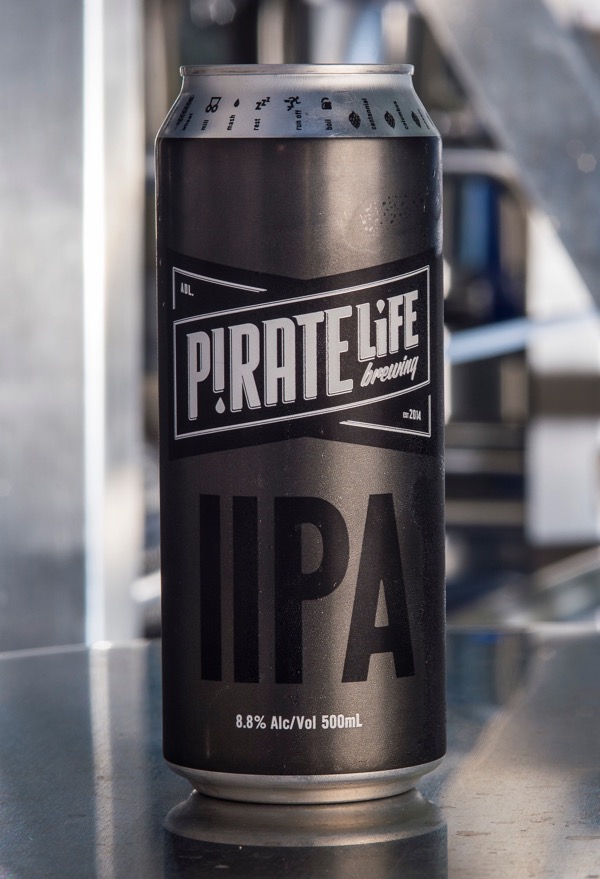
Size counts in Hottest 100 beers
While the votes for the GABS Hottest 100 Aussie Craft Beers continue to roll in and the subtle not-quite-canvassing from brewers goes on, it seems like a good time to look back at the year that was and see how some of the trends in beer might play a role in determining this year’s results.
This is purely some speculative fun rather than looking into a crystal ball to see the results, so I hope you’ll indulge me.
The bigger the better
Naturally, the bigger you are, the better you’ll do in a popularity contest. If people can’t get their hands on your product, they won’t give you their support.
It’s clear that the mainstays at the top of the list in previous years benefit from a large fan base but also from big distribution networks. This is particularly so for giants Little Creatures and James Squire, but also the ‘large’ independents Stone & Wood, Feral and 4 Pines. Expect these guys to occupy most of the spots in the Top Ten.
When it comes to voting, it’s possible that not everybody has, like me, comprehensive spreadsheets and pivot tables of their beer ratings given throughout the year (although how else you would objectively whittle down your top 5 is a mystery to me).
Regardless of your method, only people with a definitive list will actually use the search function on the voting form to locate specific beers. Others will more likely have their eyes drawn to familiar and well-known beers and brewers; again benefiting the bigger names.
The ‘Indie’ Hottest 100
In the shadow of recent news that‘non-independent’ brewers may be excludedfrom the Craft Beer Industry Association,it will be particularly interesting when the ‘Hottest Indie Beers’ results are revealed, a few days after the main results.
With more mainstream drinkers getting on board the Hottest 100 voting train, it’s likely we’ll see an increased footprint on the list from the big brands. I believe most smaller local breweries will have to be content with one or two spots in the middle of the pack. We’ll see how much impact they have when the multinationals are excluded.
It’s a matter of style
In a similar vein, while brewers continue to push the boundaries of style and flavour, beer connoisseurs will thrive. However, I would expect that accessible, hop-driven beers will once again dominate the Hottest 100 results.
Looking back at the past few years, the Hottest 100 tends to be dominated by pale ales, IPAs and variants on the theme. This is not simply a function of the enduring popularity of such styles in the Australian environment, but the fact that these beers have iterations that are widely available from every single brewery in the country.
As far as the voting equation goes, if you do lots of different styles, your votes from a discerning audience will be fragmented across them; add a limited distribution network and you don’t stand much of a chance. If you do one or two accessible and commonly available beers, expect big things.
If there was a style that emerged from the woodwork in 2016, I’d say it was the gose. It seems an odd choice – a salty, somewhat sour German wheat beer – but a lot of craft brewers had a crack at making one, including four brewed specifically for the GABS festival in May.
It’s almost a dead certainty we’ll see the first gose make it onto the Hottest 100, as one of them – the Peanut Brittle Gose from Bacchus Brewing in QLD – walked away with the People’s Choice Award at GABS. In previous years, the GABS people’s choice winner has invariably gone on to achieve a top 20 spot in the Hottest 100, and given Bacchus has now opened up a bottling line to increase distribution beyond beer-specific venues, it’s a comfortable prediction that not only will we have the first gose in the Hottest 100, but likely in the top 20 or even top 10.
Geographical pockets
The big unknown factor in predicting the Hottest 100 is that, as the voting audience increases and diversifies, the volatility also increases, particularly evident when certain voting ‘pockets’ seem to open up. Although the source of the results, breakdown by state, location, etc. have always been a closely-guarded secret, one can at least speculatively discern that Vale Ale’s unexpected win in the 2011 poll was due to a big contingent of SA voters getting behind the Vale brand. While the beer has continued to rank well in the poll, in 2015 it dropped to #65, and in 2016 improved only slightly to #39: A fate not suffered by any other top 3 beer in previous years.
Similarly, Fortitude Brewing Company’s three top 20 spots in 2015 felt like the result of an isolated pocket of Queensland voters getting behind a local beer brand to boost its standing. In 2016, Fortitude’s two Noisy Minor beers slipped respectively to #31 and #27, while its original Golden Ale went from #11 in 2015 to missing out on the 2016 list altogether.
These drops are in no way an indicator of a drop in popularity, quality or availability (the opposite is almost certainly true) but just a quirk of the voting trends. So the question of where that geographically isolated ‘pocket’ might be – or if there is one at all – this year is the big mystery.
Could 2016 be the year that Canberra makes a big impact on the poll? With Braddon’s Bentspoke Brewery recently launching a canning line to expand distribution beyond its premises, and a few smaller players – including Pact and Capital Brewing – gaining traction and attention, our national capital’s beer scene is in its strongest position in years, and it has theparochialbacking oflocal media outlets.
Alternatively, will the fact that New Zealanders are being invited to participate in their own poll have an impact? While it’s unclear whether Aussies are being encouraged to vote in the NZ poll and vice-versa, the increased attention from across the Tasman could have an unexpected impact, and it’s possible that Aussie beer brands with strong distribution in New Zealand could hold a more competitive position than those focused more exclusively in our own backyard.
Where to next year?
Given everything that we know, but more importantly what we don’t know, the most fascinating thing to me will be what happens following the announcement on Australia Day. As Pirate Life’s co-founder Red Proudfoot told me in December, the fledgling brewery opened up hundreds of new accounts in light of its first foray in the Hottest 100 results last year.
It’s no small thing to get the national spotlight on your products, and as a popularity contest (i.e. ‘people like me like this beer’), the Hottest 100 is a far better yardstick for finding a new beer you’ll enjoy than any kind of BJCP-accredited professional beer judging contest. Breweries should be forgiven (if anything, they should be encouraged) for milking any Hottest 100 success – however small – for all it’s worth.
And to you, the discerning and well-informed beer drinker, there’s still time for you to vote and make sure that beer you love gets acknowledged. Give your favourite beer or your favourite local brewer some love.
Voting closes January 20 and you can cast your votes here.









